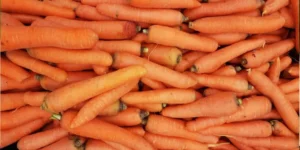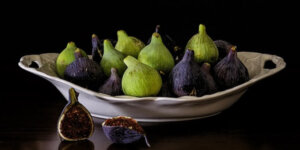Organic No-Till: Farming like the Earth Matters

If we could do one thing for the planet it would be to ditch the plough. When we turn over soil, the air and sun wreak havoc on the microbes, which is why we need chemicals to bring the fertility back. No-till creates thin furrows in the soil and drops seeds in.
It’s difficult to convince the food giants of the importance of these methods, but a lot of US ranchers realize we either pay more now to produce crops, or we pay later. If the latter, we will have degraded and sterilized the land and the agricultural system will be in crisis.
The excerpt below is from Two Percent Solutions for the Planet by Courtney White and has been adapted for the web.
If we could do one thing for the planet, I’d vote for ditching the plow.
 For starters, turning soil over with a plow to grow food—a practice that goes back at least five thousand years—causes erosion and robs plants of critical nutrients, organic matter, and shade by removing crop residues on the soil surface. Worse, plowing—also called tilling— destroys the microbial universe underground by exposing beneficial protozoa, fungi, and other forms of life to the killing effects of sunlight, wind, and heat. The plow itself also tears delicate and essential mycorrhizal fungi to pieces. These microcritters are a key to soil fertility, which is why synthetic fertilizers are required in conventional systems to replace the fertility lost because of their mass slaughter. Lastly, plowing also releases large amounts of stored carbon into the atmosphere, adding to the planet’s greenhouse gas problem. Repeated plowing eventually depletes soil of its carbon stocks.
For starters, turning soil over with a plow to grow food—a practice that goes back at least five thousand years—causes erosion and robs plants of critical nutrients, organic matter, and shade by removing crop residues on the soil surface. Worse, plowing—also called tilling— destroys the microbial universe underground by exposing beneficial protozoa, fungi, and other forms of life to the killing effects of sunlight, wind, and heat. The plow itself also tears delicate and essential mycorrhizal fungi to pieces. These microcritters are a key to soil fertility, which is why synthetic fertilizers are required in conventional systems to replace the fertility lost because of their mass slaughter. Lastly, plowing also releases large amounts of stored carbon into the atmosphere, adding to the planet’s greenhouse gas problem. Repeated plowing eventually depletes soil of its carbon stocks.
Fortunately, there is an alternative to the plow—it’s called no-till. On a modern, conventional farm, a tractor and a plow are required in order to turn over the soil and prepare it for seeding and fertilizing, a process the often requires three passes of the tractor over the field. In a no-till system, a farmer uses a mechanical seed drill pulled behind a tractor to plant directly into the soil, requiring only one pass. The drill makes a thin slice in the soil as it moves along, but nothing resembling the broad furrow created by a plow. The soil is not turned over and any growing plants or crop residue on the surface are left largely undisturbed, which is a great way to reduce erosion and keep soil cool and moist, especially during the hot summer months. These are all good reasons why no-till has grown in popularity with farmers around the world.

One of the major disadvantages of no-till, however, is its lack of weed control. When farmers don’t plow, the weeds say “thank you very much” for all that undisturbed soil and grow vigorously. To kill weeds in a no-till system, many farmers apply chemical herbicides to their fields. Lots of them. They also spray pesticides to keep the bugs in check. Additionally, many no-till farmers use genetically modified seeds, often in combination with the synthetic herbicides.
All of this is verboten in an organic farming system, of course, which brings us to the Holy Grail of regenerative agriculture: organic no-till. It combines the best of both worlds—no plow and no chemicals. It operates on biology—plus the tractor and the seed drill. It’s a major development that’s just catching on and it came about as innovations so often do—by accident.
One day, Jeff Moyer, the longtime farm director at the Rodale Institute, an organic farming research and education center located in eastern Pennsylvania, noticed that as he drove in and out of a field on his tractor, the wheels had crushed and killed a plant called hairy vetch along the field’s edges. Vetch is a winter-tolerant legume that organic farmers often plant as a cover crop in the fall to protect the soil surface until the cash crop, such as wheat or corn, can be planted in the spring.
Moyer realized that by “crimping” (crushing) the vetch plants with the tractor’s wheels, he had caused them to die but hadn’t detached the plants from the soil. This was important because, by remaining attached to their roots, the dead vetch became a new type of cover crop—albeit a dead one. (Normally cover crops are harvested, composted, and applied to the field later in the year.) This was good because it meant that after a pass of the no-till drill in the spring—to plant the seeds of the cash crop—the layer of dead vetch would suppress any weed that tried to grow. Most weeds do not have the strength or stamina to push their way up through a layer of organic material. No chemicals needed; no turning the soil needed. Voila, organic no-till!

However, no mechanical piece of equipment existed that could do the job of crimping the cover crop (and driving a pickup truck through a whole field for the task would be impractical). So, Moyer took the initiative and, after lots of trial and error, he and his colleague John Brubaker settled on a design for what they call a roller-crimper—a hollow metal cylinder to which shallow metal ribs have been welded in a chevron design (like tractor tires). The roller-crimper is mounted in front of a tractor, and as it rolls along through a field it efficiently crimps the cover crop, breaking the plants’ stalks. The weight of the roller-crimper can be adjusted by adding or removing water from the hollow cylinder.
As developed by Moyer and others over the subsequent years, there are four basic steps to organic no-till:
- To protect the soil and keep down the weeds, a winter-hardy cover crop such as vetch, barley, wheat, or rye is planted in the fall;
- When the cover crop reaches maturity in the spring, the farmer knocks it down with a roller-crimper;
- The farmer plants a cash crop with a no-till drill, usually at the same time she or he crimps (crimper in front of the tractor, drill pulled behind), and the cash crop germinates and grows up through the crimped cover crop;
- After harvest in the fall, the organic residue of both crops can be incorporated into the soil as next year’s cover crop is planted.
Organic no-till offers a wealth of benefits.
The decomposing cover crop builds soil and substantially reduces erosion. Nearly all annual weeds are smothered. Cover crop roots increase nutrient cycling in the soil, and biodiversity is increased. Plus, greenhouse gas emissions are reduced. On the practical front, costs are low and the roller-crimper is easy to use and maintain.
Better yet, if the tractor runs on farm-produced biodiesel or if the crimper is pulled by horses, dependence on fossil fuels is further reduced.
There are, however, some downsides to the system.

The roller-crimper in action (Jeff Moyer on tractor). A cover crop is crimped in the spring to smother weeds and protect the cash crop. Photo courtesy of the Rodale Institute
Overall, the advantages far outweigh the downsides, which is why the practice is spreading rapidly. According to Moyer, there are now hundreds of roller-crimpers at work on farms and research stations across the nation.
Organic no-till farming has another big benefit: it sequesters carbon dioxide in the soil.
Research at Rodale shows that when soil is turned over by a plow, the sudden access to oxygen speeds up the biological decomposition process, by which microbes eat up organic matter and “burp” carbon dioxide into the air. In contrast, organic methods sequester carbon by improving biological life in the soil. When combined with no-till, according to Rodale’s data, the system has the potential to sequester 1,000 to 2,000 pounds of carbon per acre per year—which is a lot—pulled directly from the atmosphere. Organic no-till is a Holy Grail that we can all appreciate!
Recommended Reads
Wild Apples, Real Cider, and the Complicated Art of Making a Living
Recent Articles
Want to grow year-round, but a greenhouse feels like a big investment? When it comes to cost and flexibility, low tunnels are the all-around winners.
Read MoreWintergreen is the stunning evergreen groundcover that’s a game-changer for your garden! It’s cherished for its aromatic leaves, vibrant fall color & bright berries.
Read MoreGrow winter carrots for a sweeter & more flavorful harvest! Ditch the bland, store-bought carrots this winter! Grow your own winter carrots for a sweeter and more flavorful twist 🥕🥕
Read MoreThe fig tree is more than just a fruit-bearing wonder. The complex nature of these trees is beyond fascinating. They are the ultimate ecosystem superheroes!
Read MoreSearching for the perfect book to give the homesteader in your life? We’ve got your go-to books for anyone interested in organic growing, permaculture, soil health, year-round growing & more! What’s their next great read?
Read More








